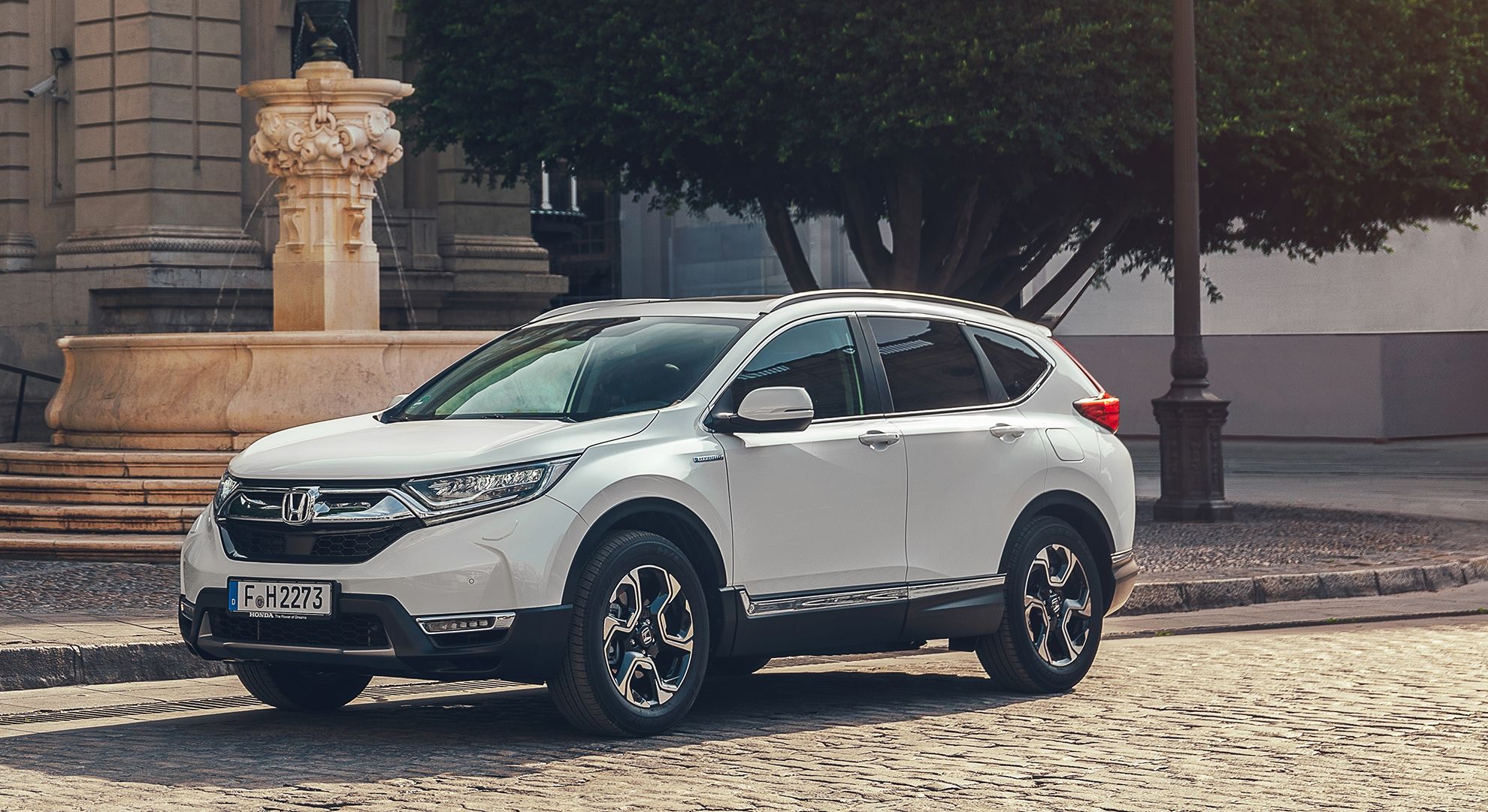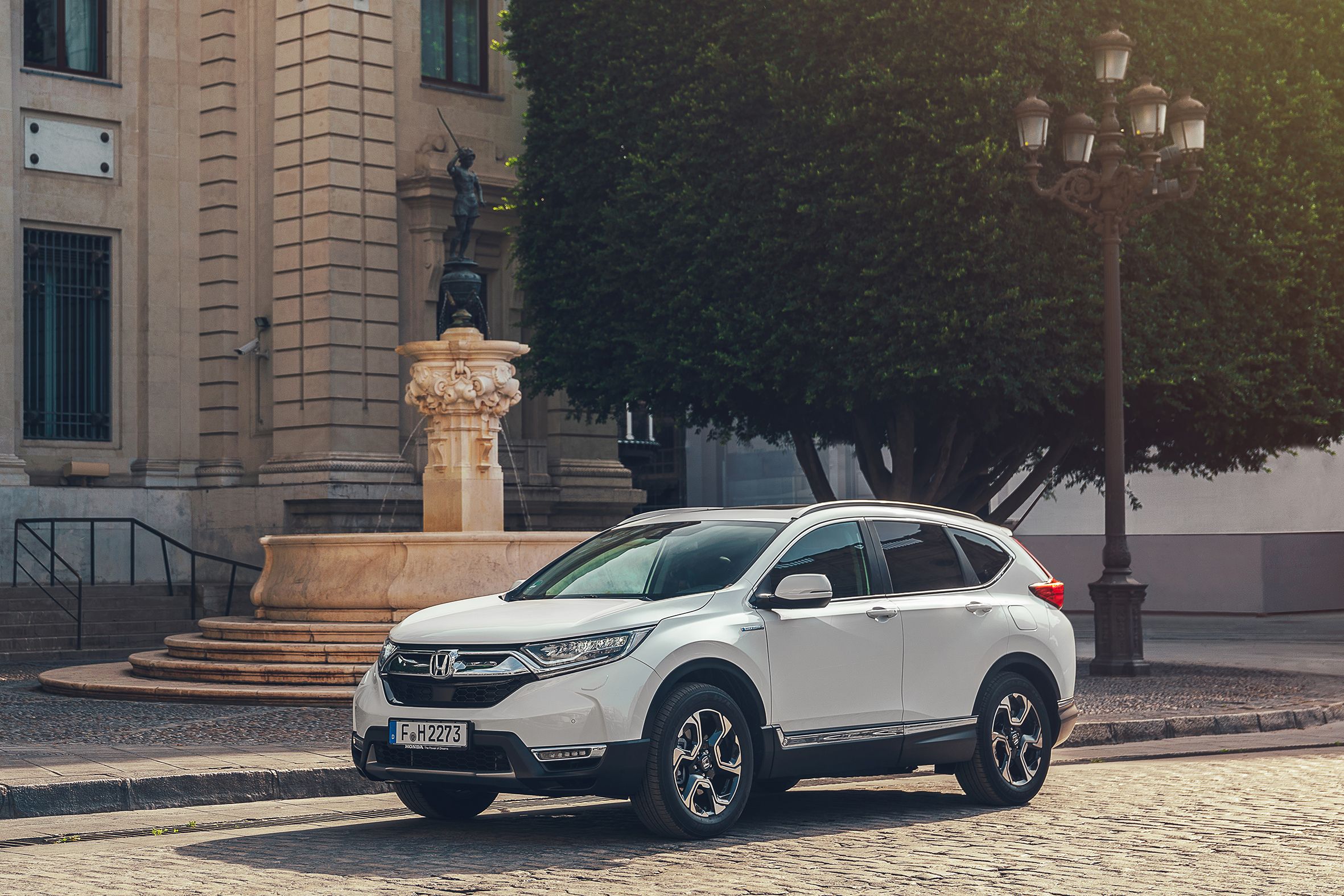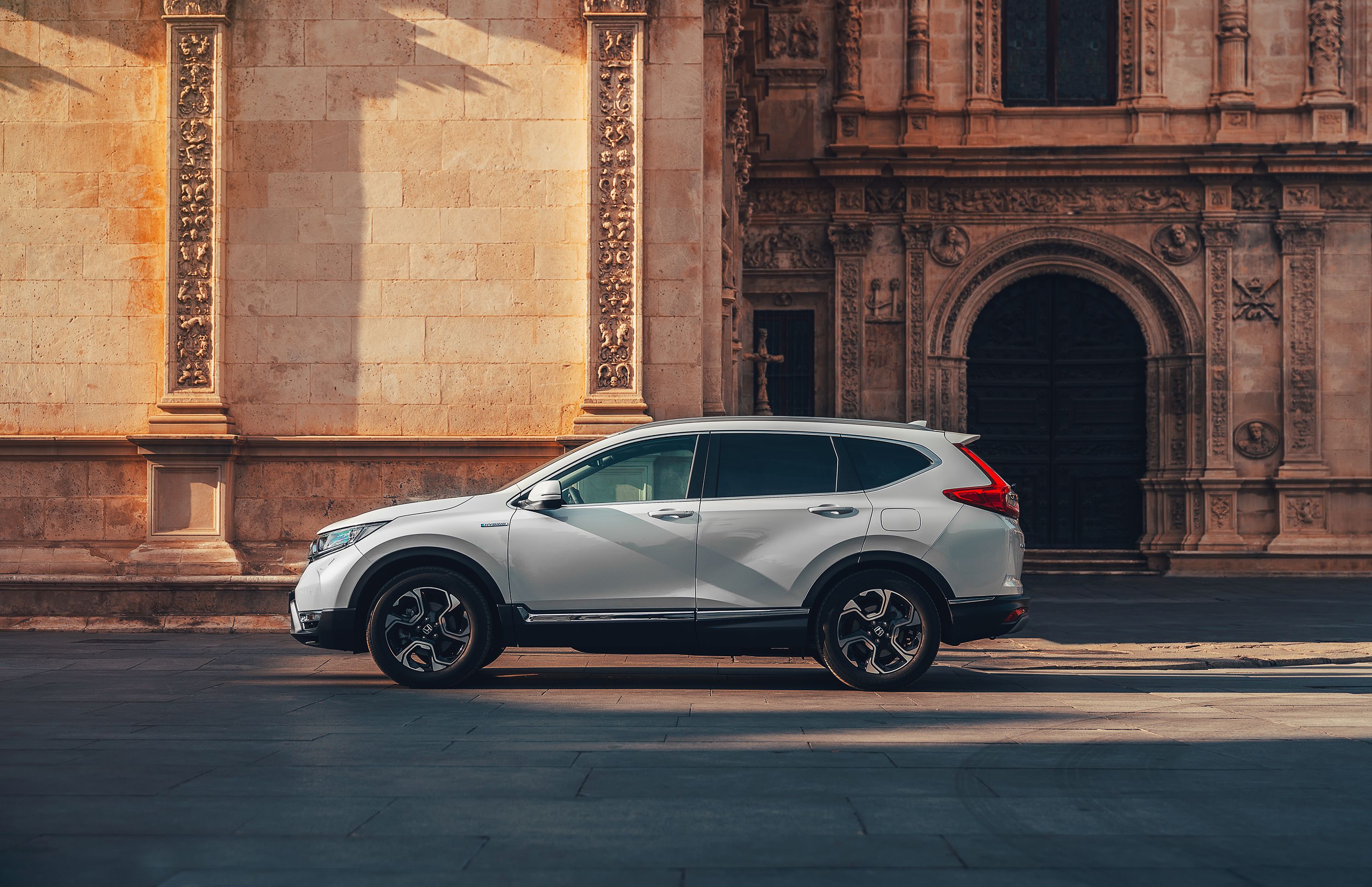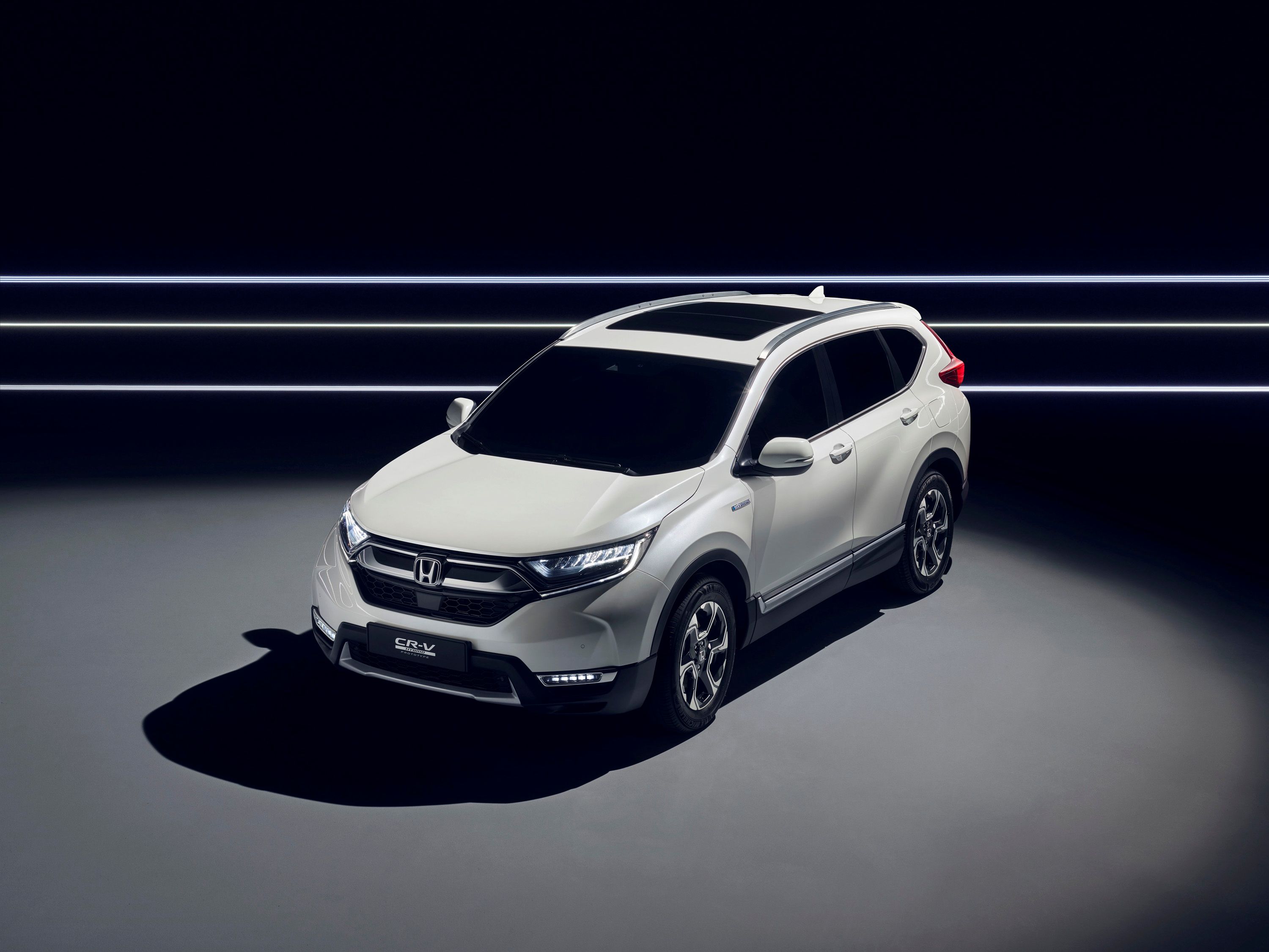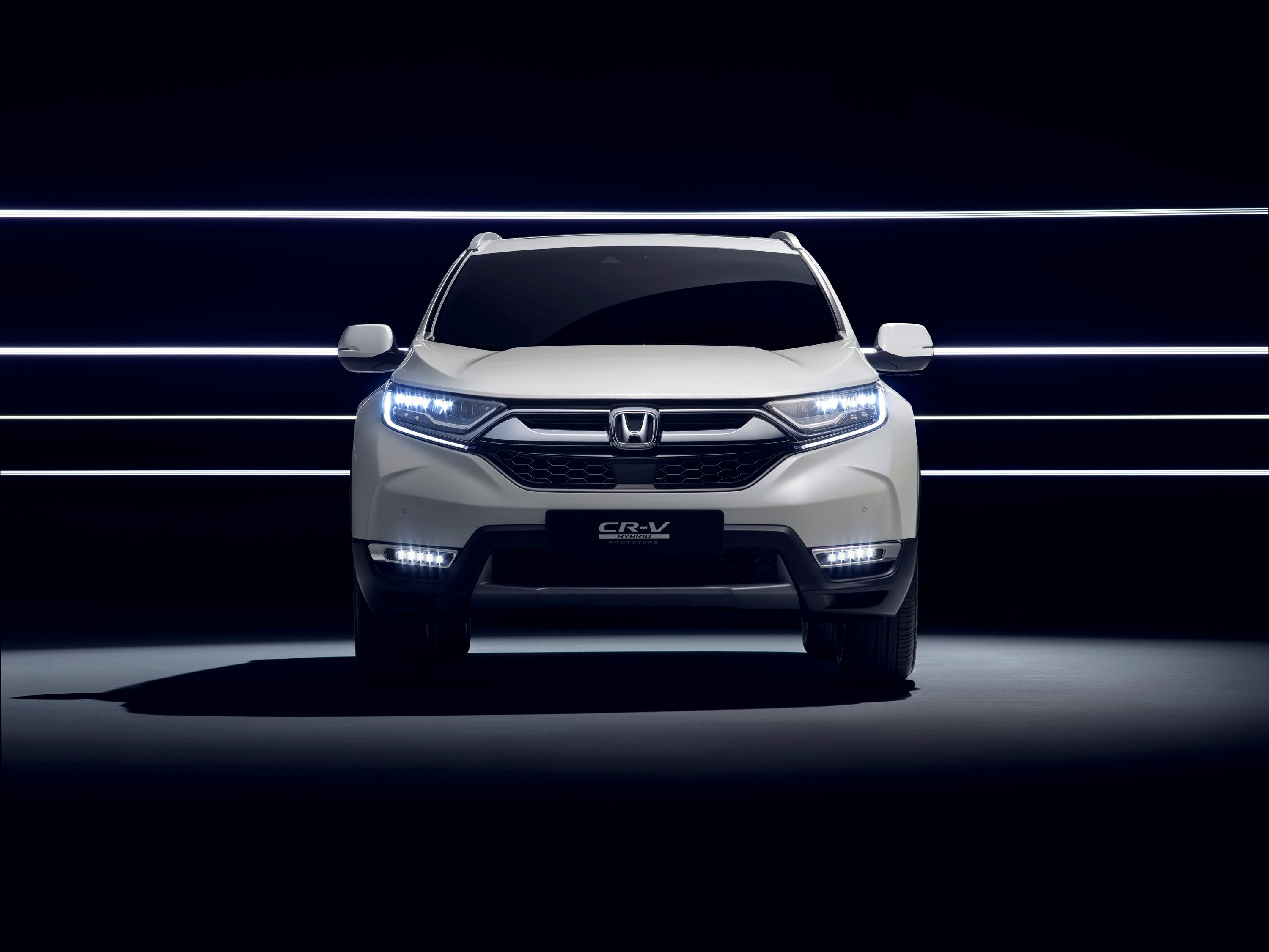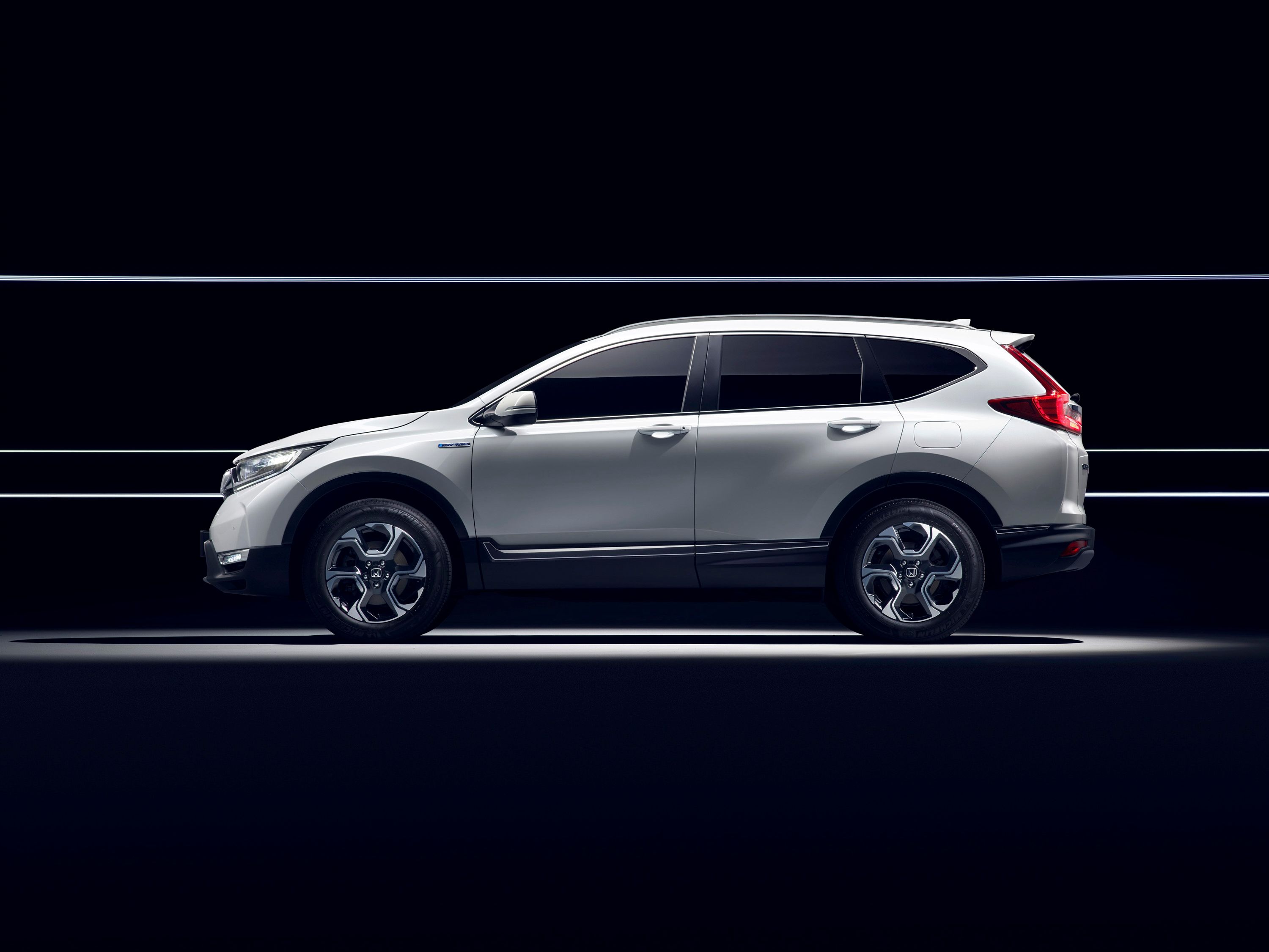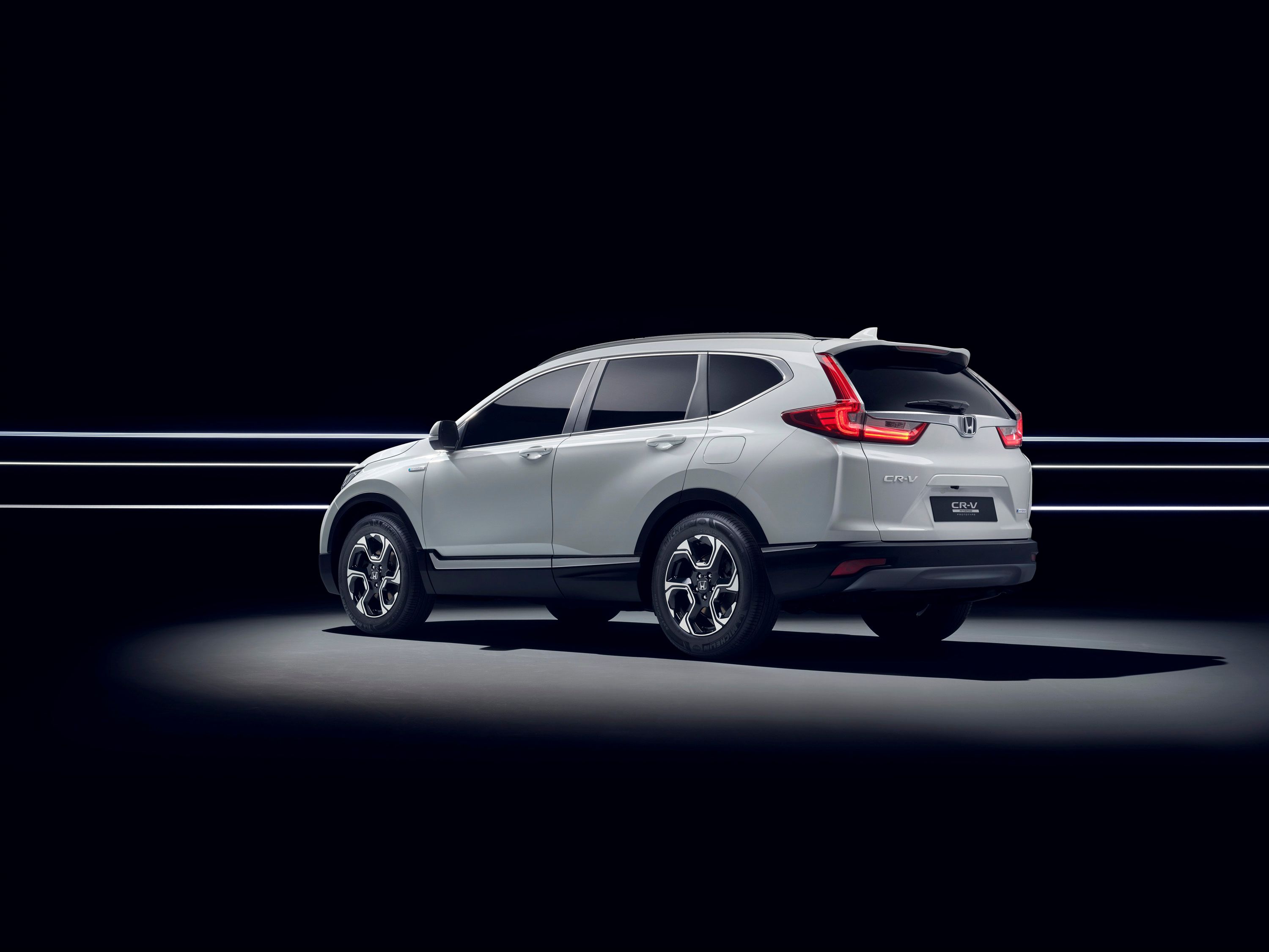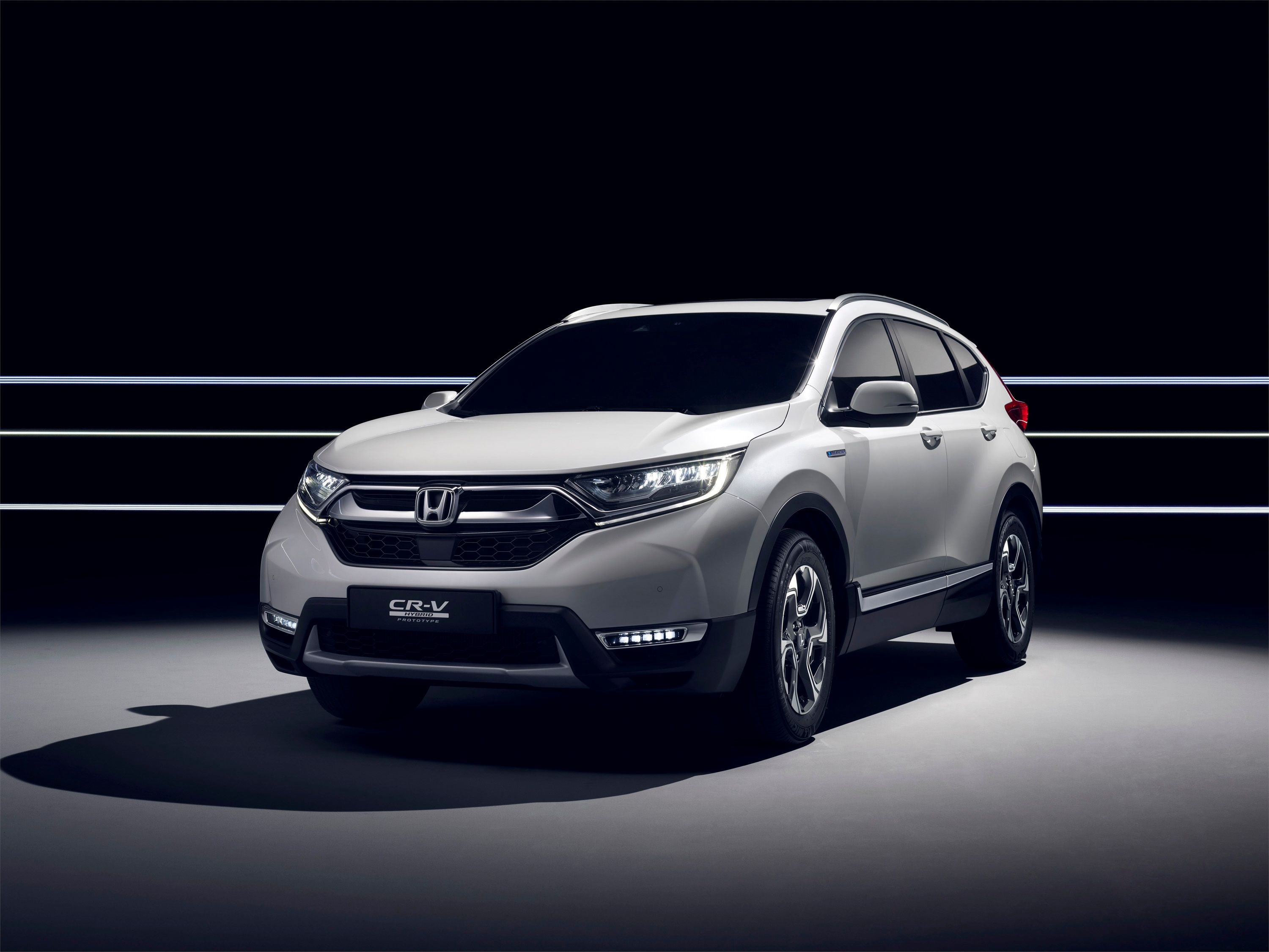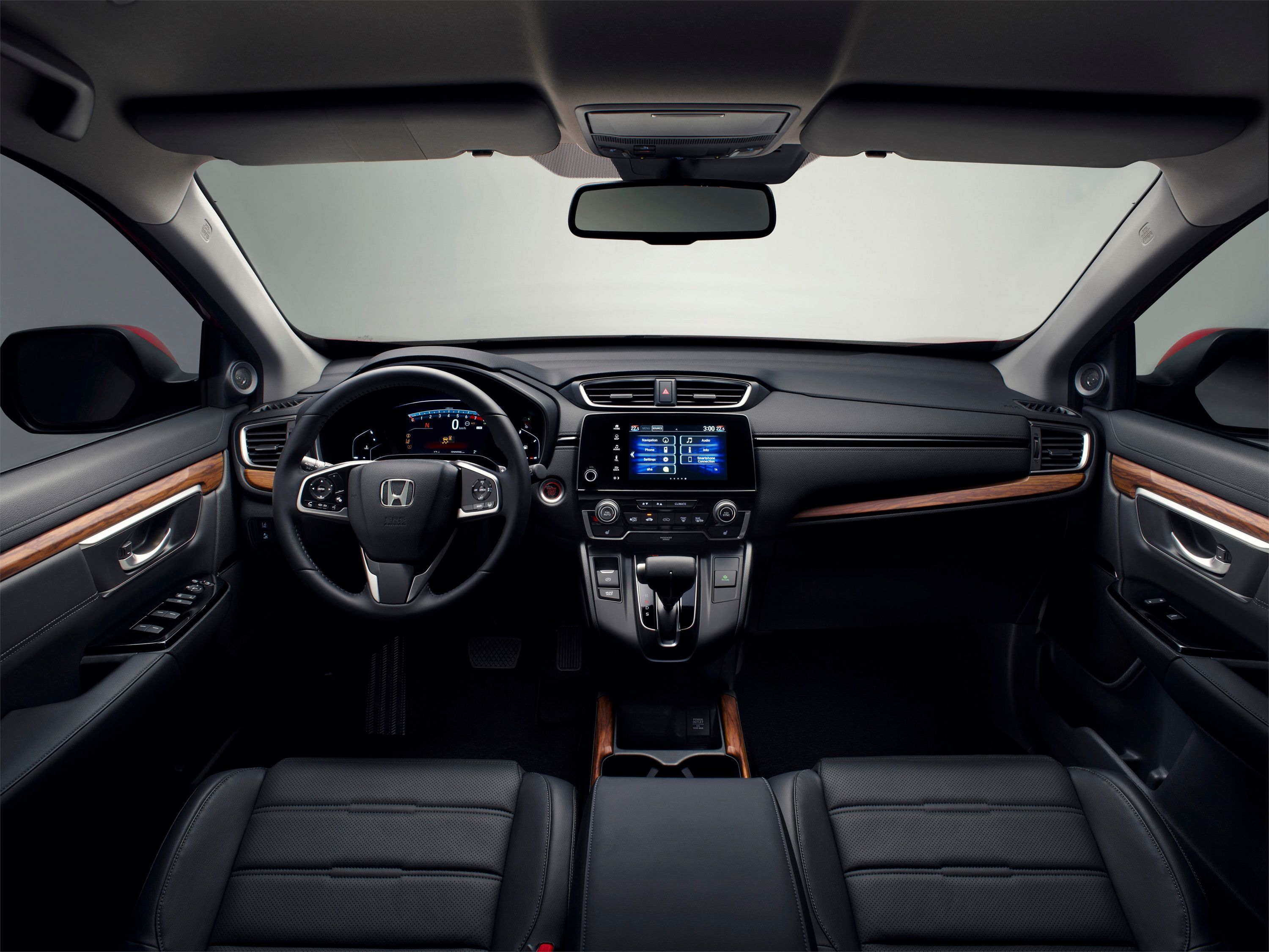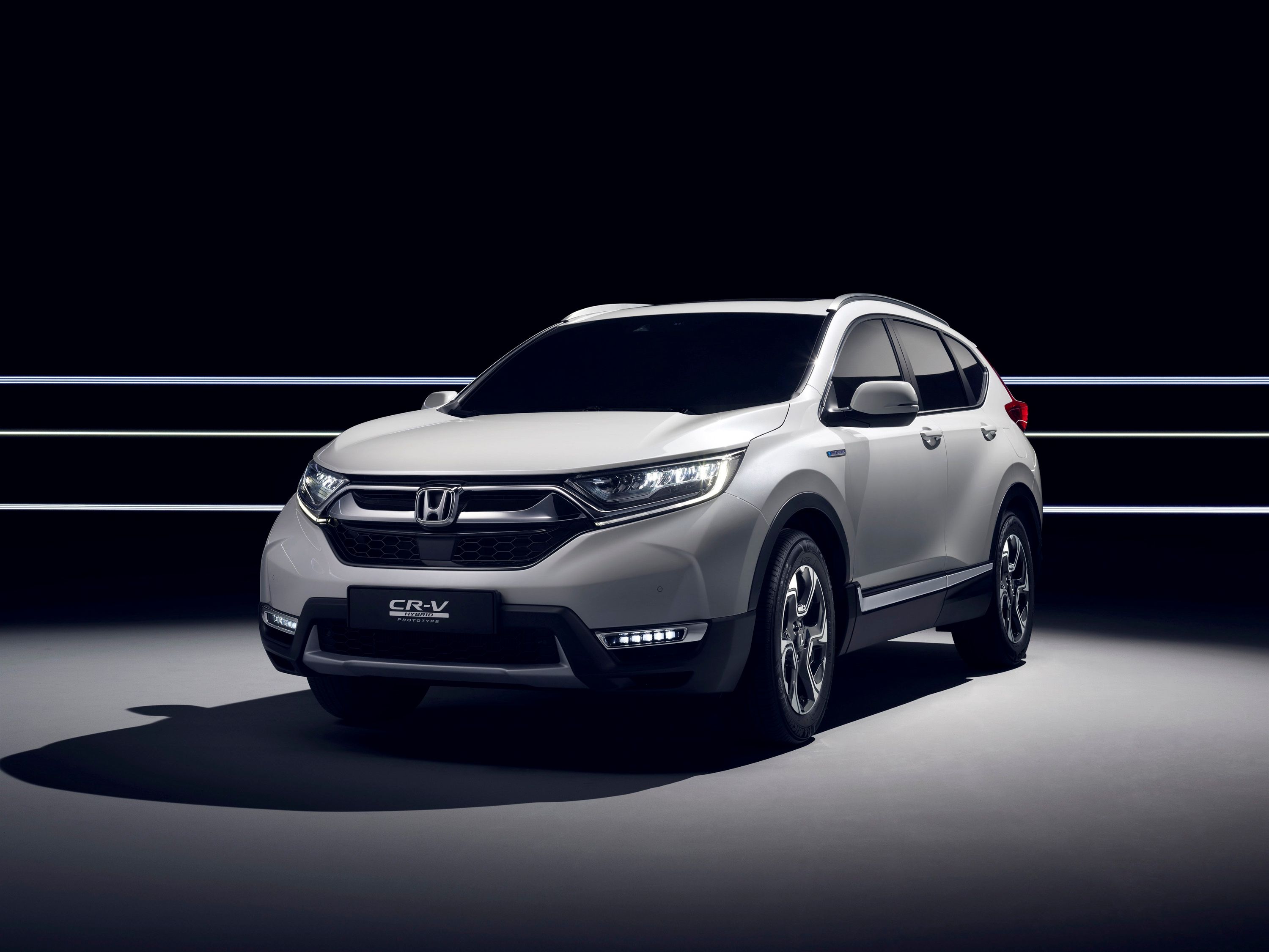Honda’s first electrified crossover for the European market is the new CR-V hybrid which it introduced at the 2018 Paris motor show. It is the second powertrain option that Honda offers on the Old Continent, after the 1.5-liter turbo shown at the Geneva motor show, and it promises decent performance with excellent economy thanks to its combination of a 2.0-liter Atkinson-cycle engine and two electric motors - it also does away with a conventional gearbox.
Instead, it uses a single fixed-gear ratio that sounds quite similar to what the Koenigsegg Regera uses, albeit in a less fancy package - one gear and plenty of electric boost at lower speeds before the engine starts to pick up. Honda offers the CR-V hybrid in both front- and all-wheel drive configurations with the latter only incurring a minimal fuel efficiency penalty.
The North American version of the vehicle will be nearly identical in terms of specs and look to the one revealed in Paris.
2019 Honda CR-V Hybrid
- Make: Array
- Model: 2019 Honda CR-V Hybrid
- [do not use] Vehicle Model: Array
Exterior
On the outside, the CR-V hybrid is pretty much identical to any other CR-V variant - that means it gets chunky modern small SUV looks, but it looks toned down and restrained compared to some rival models - its biggest rival is the Toyota RAV4 hybrid, and that model looks edgier and more modern, and alongside it the CR-V looks a bit dated.
The hybrid doesn’t get any differentiating features over other models in the range, apart from hybrid badges on the front, sides, and rear of the vehicle. All-wheel drive versions also get an AWD badge on the back.
Honda says it tested the CR-V in the wind tunnel and the model even has an active shutter grille system.
Interior
Honda has kept interior changes minimal for the CR-V hybrid and, aside from the different dials and EV mode button on the center console, below the infotainment screen and climate controls, there are no distinguishing features.
Plenty of bits are shared with the latest Civic, namely the steering wheel, infotainment screen, as well as most of its buttons and gear shifter.
The manufacturer has tried to lift the cabin ambiance slightly with the addition of wood trim on the doors and dashboard, and overall it does feel slightly more upmarket than the Civic. Just like the non-hybrid CR-V, it offers seating for up to seven passengers, although the third row might feel cramped, begging for more knee room; headroom all throughout the cabin is excellent, though.
Honda says that while the two- and three-row CR-V uses the exact same body and wheelbase, seven-seaters have a flattened fuel tank which improves interior space, as well as springs inside the rear seats for added comfort.
Drivetrain
The Honda CR-V hybrid combines a 2.0-liter, Atkinson-cycle, naturally-aspirated, four-cylinder engine with two electric motors for a combined power output of 181 horsepower and 232 pound-feet of torque (315 Nm). Three driving modes are available: Engine Drive, Hybrid Drive, and EV Drive.
Honda has significantly increased body rigidity over the previous CR-V while also lowering the center of gravity - this is said to provide “sporty and stable driving” which is further enhanced by the quick, variable gear ratio electric power steering.
Even engine note was deemed important for this model, which is why it has been specifically engineered to be pleasant on all the different powertrain options.
Prices
Pricing for the CR-V hybrid has not been announced, but other engine variants are already available starting from $24,250, although in the States if you want the new 1.5-liter turbocharged engine, you’re going to have to step up to EX grade and its $27,050 starting price.
Competition
Toyota RAV4 Hybrid
Toyota has reinvented its RAV4 for the current generation, bestowing its excellent selling small SUV with daring styling and a more sporty, youthful attitude. And this extends to the new hybrid model too, which looks just as sharp as any other version of the model - the RAV4 hybrid is definitely the CR-V hybrid’s toughest competitor.
The hybrid RAV4 has a 2.5-liter four-pot which is aided by electricity to make 218 horsepower - plenty of power to give a vehicle its size lively performance.
And we’re assured it’s not just designed to look like it drives well since great effort has been put into perfecting its ride and handling. Its center of gravity is lower, it has smaller overhangs than before, and its hybrid drivetrain can send up to 80 percent of its power to the rear wheels.
Read our full review on the 2019 Toyota RAV4 Hybrid
Nissan Rogue Hybrid
Nissan Rogue Hybrid is down on power compared to the CR-V and RAV4 hybrids, with only 176 horsepower, and it’s really not enough oomph to give it any kind of meaningful acceleration. It also uses a continuously variable transmission which the Honda has ditched and that further dulls the enjoyment that can be derived from driving it.
It does make up points in the ride comfort department, where it actually excels, its interior is very well screwed together, and materials are pretty good too. But its interior design looks a bit dated compared to that of the newer CR-V and RAV4, and the infotainment can be frustrating sometimes too.
Read our full review on the 2017 Nissan Rogue Hybrid
Chevrolet Equinox Diesel
If hybrids aren’t your thing, but you’re still into efficient high riders roughly the same size as a CR-V, then the diesel-powered Chevrolet Equinox could be for you. It runs a 1.6-liter, turbodiesel, four-cylinder which puts out 137 horsepower and 240 pound-feet of torque, and is paired to a six-speed automatic gearbox. It can achieve as much as 45 mpg on the highway (more than the advertised 38 mpg).
Performance is leisurely given its relatively low power output, but being a diesel its torque helps motivate the vehicle quicker than you might expect - it takes around 10 seconds to go from naught to sixty, which is respectable given its specs. Other plus points are its decent range of standard equipment, good fit and finish quality and the predictable handling.
Read our full driven review on the 2018 Chevrolet Equinox Diesel
Conclusion
The Honda CR-V hybrid proposes an interesting technical solution, with its one-geared transmission and extended reliance on electric boost. Its claimed efficiency numbers are great, and the promised improved refinement and premium feel certainly help make a case for it in the segment.
It is going up against the newer and more daring looking Toyota RAV4 hybrid, but the CR-V has plenty going for it to entice buyers in this crowded sector of the market. Back in 2016, it was the best-selling high rider in America, and it still stands a chance to achieve that performance.
Buyers will still appreciate its fairly restrained look, large cargo area, great ride and handling (with what is said to be the sharpest and most direct steering in its class) and high-quality cabin and plenty of safety features. The only area where it really excels is interior space, but it does plenty of other things well enough that many people find it a perfect fit to their lifestyles.
Further reading
Read our full review on the 2017 Honda CR-V Hybrid Prototype.
Read our full review on the 2018 Honda CR-V.

